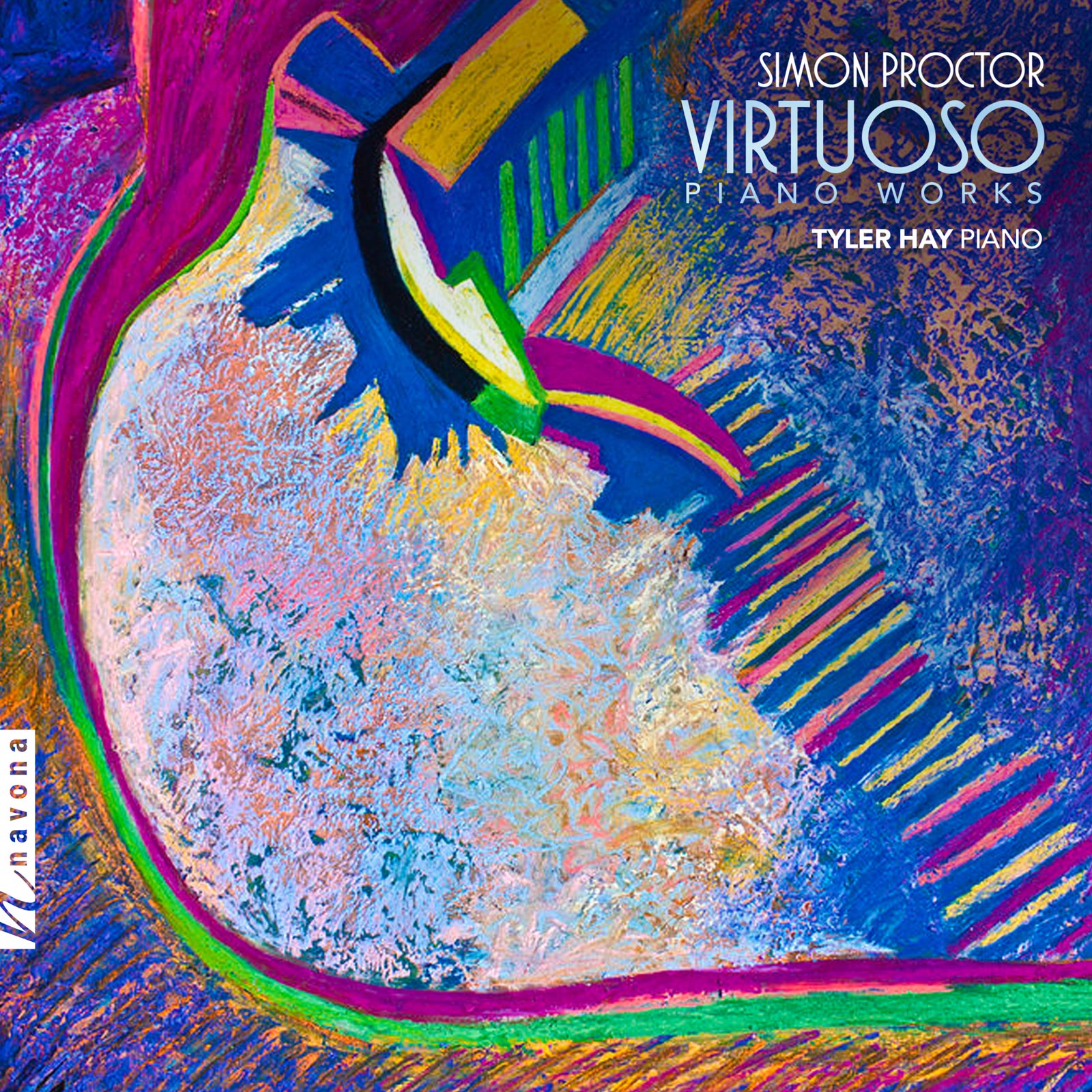Virtuoso Piano Works
Simon Proctor composer
Tyler Hay piano
Composer Simon Proctor and pianist Tyler Hay join forces to bring a dynamic collection of Proctor’s original compositions to life on VIRTUOSO PIANO WORKS from Navona Records. With works spanning decades of his musical career, Proctor delivers a variety of celebrated classical styles with his own personal twists on this album. From rhapsodies to nocturnes, and everything in between, the composer-pianist duo’s mutual love for virtuosic piano music shines throughout, a perfect pairing that makes for a vicariously exciting listening experience.
Listen
Stream/Buy
Choose your platform
Track Listing & Credits
| # | Title | Composer | Performer | |
|---|---|---|---|---|
| 01 | Longetude | Simon Proctor | Tyler Hay, piano | 6:20 |
| 02 | Sonata No. 1: I. Allegretto, Allegro, quasi Andante | Simon Proctor | Tyler Hay, piano | 7:39 |
| 03 | Sonata No. 1: II. Andante, poco piu mosso, quasi Allegro, poco Allegro Grandioso, Andante | Simon Proctor | Tyler Hay, piano | 10:54 |
| 04 | Sonata No. 1: III. A Piper – Allegretto | Simon Proctor | Tyler Hay, piano | 5:23 |
| 05 | Sonata No. 1: IV. Presto, Prestissimo | Simon Proctor | Tyler Hay, piano | 5:46 |
| 06 | Noctilucent Nocturne | Simon Proctor | Tyler Hay, piano | 6:34 |
| 07 | Rhapsody No. 17 | Simon Proctor | Tyler Hay, piano | 3:14 |
| 08 | Nocturne in Silver and Blue | Simon Proctor | Tyler Hay, piano | 6:00 |
| 09 | Fugal Prelude No. 7 | Simon Proctor | Tyler Hay, piano | 3:25 |
| 10 | Nocturne at Lake Maggiore | Simon Proctor | Tyler Hay, piano | 5:16 |
| 11 | Rhapsody No. 18 | Simon Proctor | Tyler Hay, piano | 8:19 |
| 12 | Rhapsody No. 21 | Simon Proctor | Tyler Hay, piano | 9:24 |
Recorded March 21, 2022 at St George’s Headstone in Harrow, United Kingdom
Recording Engineers Michael Ponder, Adaq Khan
Cover Art: There Is One Dance You’ll Do Alone by Polly Castor
Executive Producer Bob Lord
A&R Director Brandon MacNeil
A&R Christian Stewart
VP of Production Jan Košulič
Audio Director Lucas Paquette
VP, Design & Marketing Brett Picknell
Art Director Ryan Harrison
Design Edward A. Fleming
Publicity Patrick Niland, Aidan Curran
Artist Information

Simon Proctor
Simon Proctor is a graduate of the Royal Academy of Music where he gained the GRSM degree and LRAM diploma in piano performance and teaching. He won several prizes for composition, orchestration, and piano including the Eric Coates prize, the Academy’s top award for orchestral composition. As a pianist, he has given recitals in Germany, The Bahamas, and the United States and has appeared many times as a concerto soloist in the United Kingdom and America.

Tyler Hay
Tyler Hay was born in 1994 in Kent and began learning the piano at the age of 6. He studied with the Head of Keyboard, Andrew Haigh at Kent Music Academy for three years before gaining a place to study at the Purcell School for Young Musicians in 2007 where he continued under Tessa Nicholson. He completed his studies as an ABRSM scholar at the Royal Northern College of Music in 2016 where he studied with the Head of Keyboard Graham Scott and Professor Frank Wibaut.

